Rubber trees appeared in the banzan red soil of Binh Phuoc in the early 20th century. Since then, it has been closely attached to the development of this area.
In recent years, rubber trees have flourished in the area because the price for the export of rubber latex has continually increased, bringing high benefits to local farmers. Compared with other trees, this variety of tree requires much lower initial capital and less effort to take care of.
According to Dr. Tran Thi Thuy Hoa, General Secretary of the Vietnam Rubber Association, the export value of natural rubber of Vietnam set a record with a turnover of over 2 billion USD in 2010. Thus, rubber became Vietnam’s second largest agricultural product for export, after rice, and ranked fourth in the world.
In 2011, the National Agricultural and Fishery Promotion Centre organized a forum on sustainable development of rubber trees in Binh Phuoc.
At the forum, Bui Van Thach, Deputy Chairman of Binh Phuoc Province People’s Committee affirmed that rubber trees were the key to the province’s development because it was very suitable to the soil and climate.
The province turned exhausted forests into areas specializing in rubber trees and forestation, helping to increase the growing of rubber trees and improving the living standards of local farmers.
At present, there are many large corporations under the Vietnam Rubber Industry Group operating effectively in the province, namely Phu Rieng, Binh Long, Loc Ninh and Dong Phu.
During our working trip to Binh Phuoc, we visited Thuan Phu Rubber Farm of Dong Phu Rubber Joint-Stock Company that was awarded the title “Labour Hero in the Renewal Process”.
Under the green canopy of immense rubber forests, we saw workers industriously taking white rubber latex from the trees.
Dong Phu Rubber Joint-Stock Company was established in 1981. It was formerly Phu Rieng Rubber Farm of the French in the early 20th century. In the beginning, the company owned about 2,000ha of old rubber trees that brought a poor yield.
After 30 years, the rubber tree growing area of Dong Phu has increased to over 10,000ha with an average productivity of 2.5 tonnes/ha.
Besides growing rubber trees and exploiting rubber latex, the company is the pioneer and the only unit of the Vietnam Rubber Industry Group investing in technology to produce rubber products to reduce the export of crude materials, providing jobs for farmers, increasing the benefit chain and affirming the trademark of Vietnamese rubber in the international market.
At present, the province has over 30 workshops producing rubber latex with a total capacity of 340,000 tonnes of products per year. Many workshops have invested in modern machines and equipment so the quality of the latex is very good.
The products of Binh Phuoc not only have a high quality but also are diversified, meeting the strict requirements of customers, including the world’s leading tyre manufacturing groups, Michelin and Mitsubishi. The major markets of Vietnam rubber in general and Binh Phuoc in particular are China, the UK and other EU countries.
According to Phan Van Don, Deputy Director of Binh Phuoc Province’s Department of Rural and Agricultural Development, in the future the province will closely cooperate with the Institute for Rubber Research to catch up with the scientific and technical advances and then transfer them to farmers through the system of agricultural promotion centres.
The province will encourage the farmers to expand the rubber tree growing areas and promote the close management of seed resources through investment in building a system of providing high quality seedlings, ensuring the quality of products.
The Dong Phu Rubber Joint-Stock Company is awarded the title “Labour Hero”.
With sound policies and current strengths, it is expected that apart from cashew trees, Binh Phuoc will become a kingdom of rubber trees and one of the key rubber tree growing areas in the whole country, making a contribution to improving the living standards of local people in particular and promoting the development of Vietnam’s rubber sector in general.
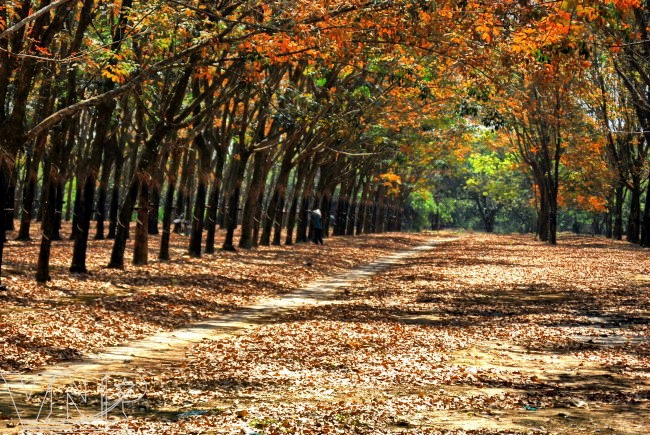
Rubber trees in Binh Phuoc shed their leaves.
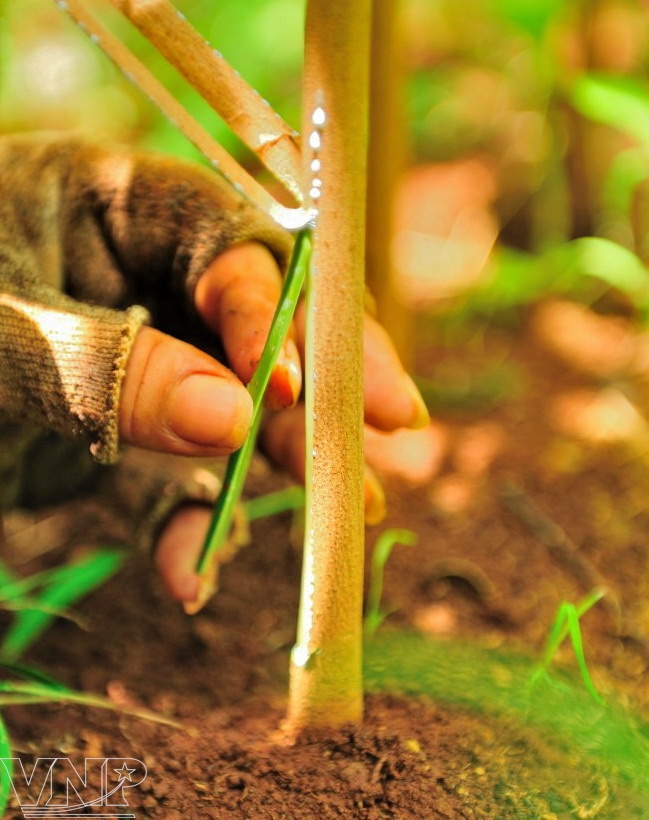
Cross-fertilizing the sapling rubber trees.
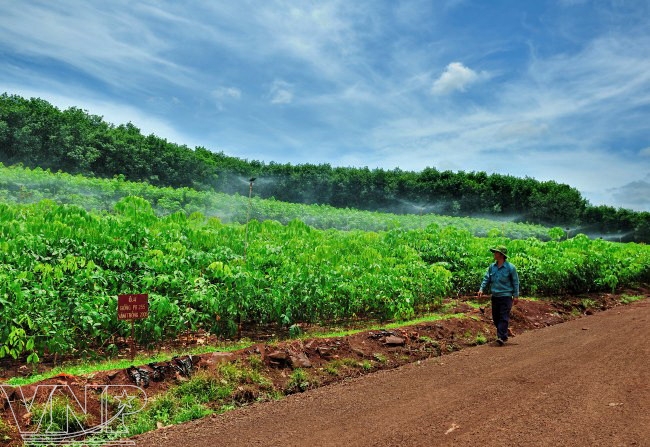
The automatic irrigation system in the seeding garden in the Thuan Phu Rubber Farm.
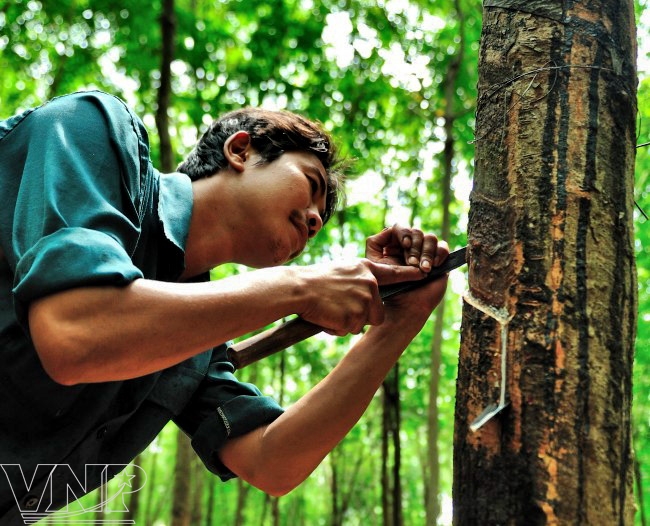
A worker takes latex from the trees.
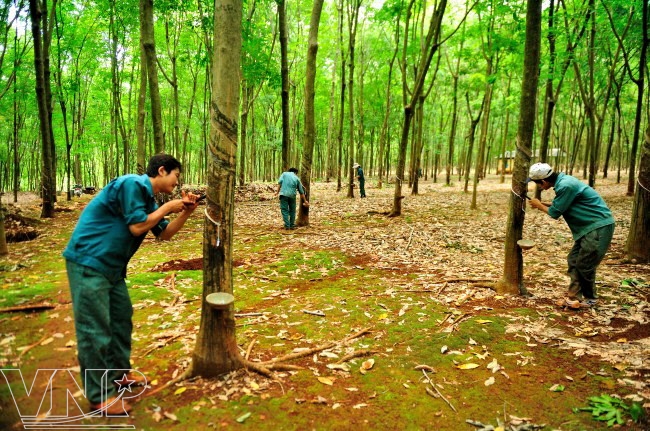
Exploiting latex on the Thuan Phu Rubber Farm.
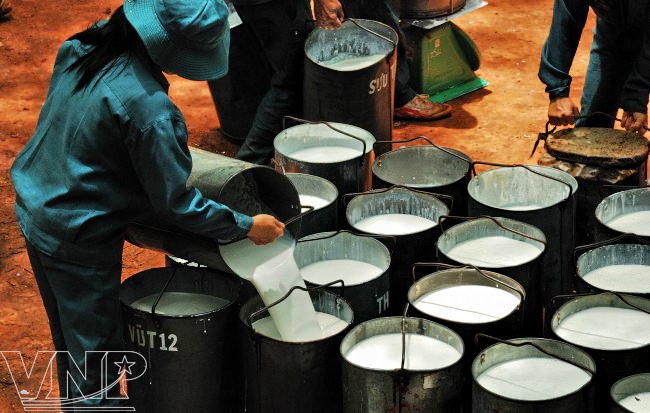
Collecting latex.
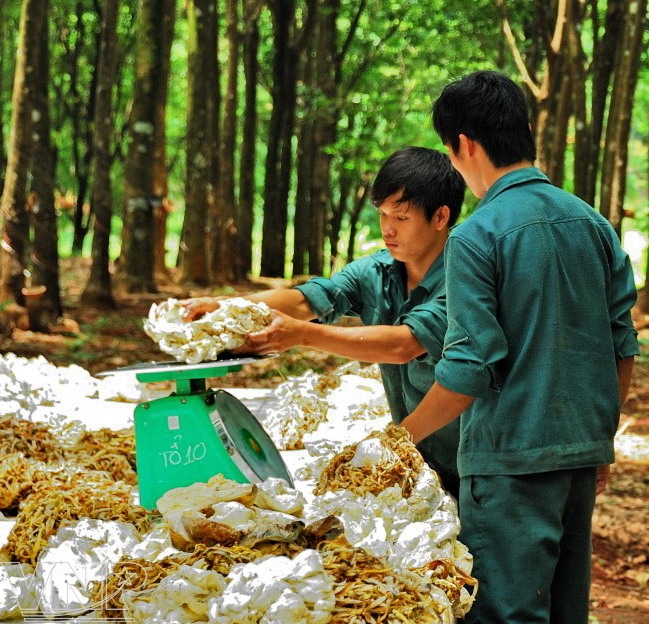
Checking the quantity of dried latex.
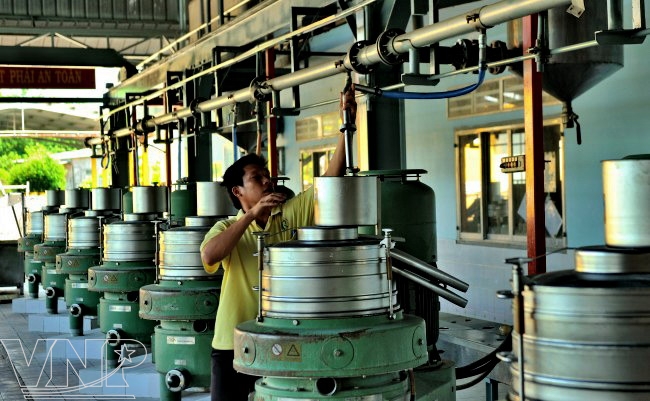
The centrifugal machine system for treating fresh latex.
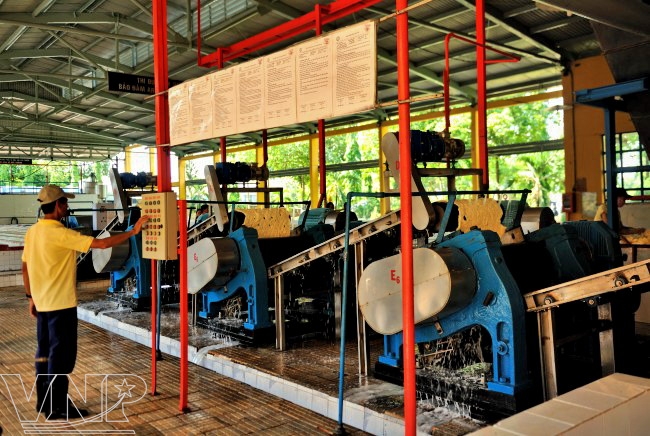
The latex drying line of the Phu Rieng Rubber Company.
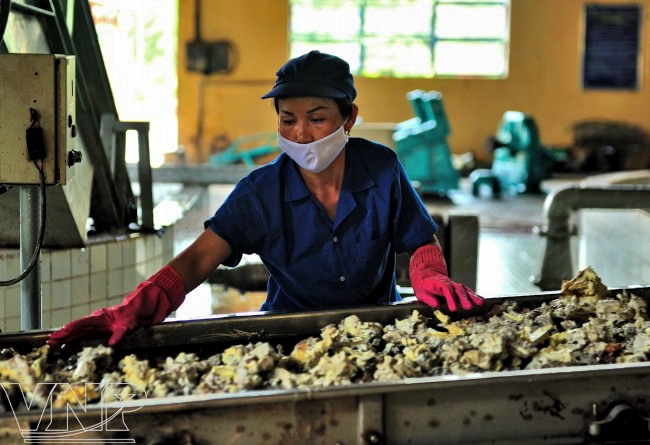
Working on the complex latex processing line.
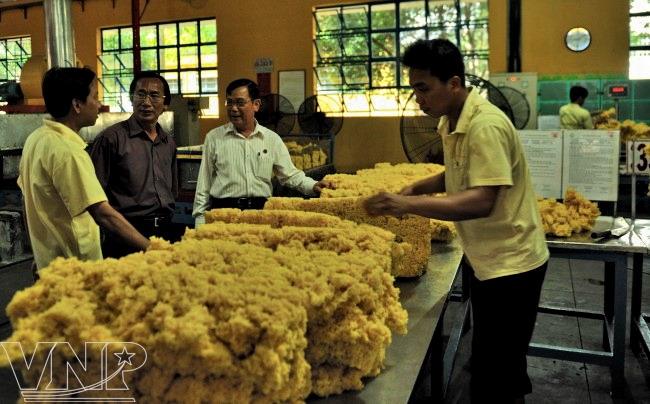
Checking the quality of dried latex.
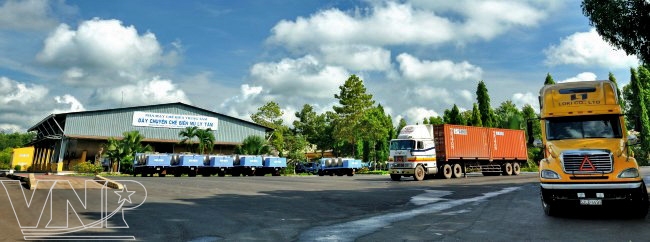
Phu Rieng Rubber Processing Factory.
VNP